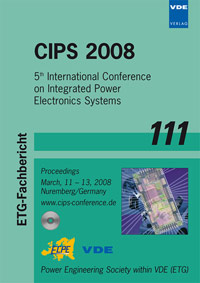Performance Comparison of a Buck Converter Using Shielded-Substrate and Co-Packaged Planar Inductors
Conference: CIPS 2008 - 5th International Conference on Integrated Power Electronics Systems
03/11/2008 - 03/13/2008 at Nuremberg, Germany
Proceedings: CIPS 2008
Pages: 6Language: englishTyp: PDF
Personal VDE Members are entitled to a 10% discount on this title
Authors:
Lim, M. H. F.; Gilham, D.; Wyk, J. D. van; Lee, F. C.; Ngo, K. D. T. (Center for Power Electronics Systems, The Bradley Department of Electrical and Computer Engineering, Virginia Polytechnic Institute and State University, Blacksburg, VA 24061, USA)
Wyk, J. D. van (Department of Electrical and Electronic Engineering Science, University of Johnannesburg, South Africa)
Abstract:
The use of the inductor as a substrate is compared with placing the inductor side-by-side with the active devices (co-packaged inductor). Using the inductor as a substrate can potentially reduce the overall footprint by half without trading off overall circuit performance. The inductor fabricated using LTCC technology is used as a substrate where the traces are printed and discrete devices mounted on top. A conductive shield is used to reduce the effect of the magnetic substrate on the circuitry. The metrics used for comparison are the percentage overshoot across the MOSFETs, the ringing frequency, switching loss, and power stage efficiency. The cases for comparison are: active circuitry with grounded shield, active circuitry with floating shield, and active circuitry without shield. These three cases are tested with substrate inductor and co-packaged inductor, making six cases in total for comparison.


